Warmth and huge savings at the same time! Ceramic heaters for home
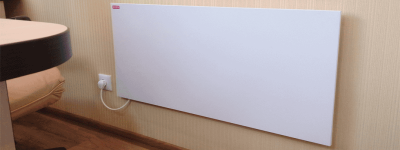
Ceramic heaters are heating devices whose heating element is made of ceramics.
They are used in residential premises as an additional source of heating., and in field conditions they replace the stove and hotplate.
Ceramic Heaters with Fan for Home: What is it?
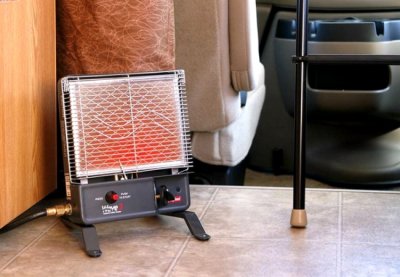
Electric appliances are used in residential buildings and apartments. convection and infrared heaters.
The design of the convector includes a tubular electric heater (TEN) with a reflector and a ceramic heating element, which is plate or metal-ceramic mesh.
Air circulation is natural; in some models, convection is accelerated according to the principle of a fan heater: cold air masses are supplied to the heated device by a propeller.
Infrared heaters They transfer heat not to the air, but to surrounding objects. The heating element of such devices is made of a honeycomb array. The honeycombs are formed by high-resistance metal wire (nickel-chrome), covered with a thin layer of baked clay. Hollow and volumetric infrared emitters are distinguished.
Important! Ceramic infrared heaters do not emit ultraviolet radiation that is harmful to humans.
Hybrid designs act simultaneously as a convector and a source of radiant heat. Among devices for home use, this operating principle is found in wall ceramic panels.
Pros
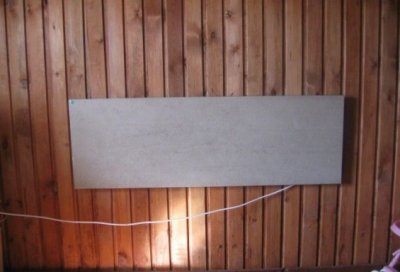
Working elements of household ceramic heaters do not heat up above 200 °C, and therefore do not leave a smell of burnt dust, do not dry the air and do not burn oxygen. Other benefits include:
- Fast heating and long heat dissipation.
- Ceramics are non-toxic, non-corrosive and non-oxidizing.
- Safety due to overheating, short circuit, tip-over sensors, built-in child protection.
- A wide range of options, colours and designs.
- Compared to oil radiators of the same capacity: compact dimensions, low weight, noiselessness, 30% greater energy efficiency.
- Service life up to 25 years.
Cons
The only drawback of such equipment is the cost. A budget floor ceramic fan heater will cost 1 thousand rubles., what's on 500 rubles more expensive than a spiral analogue, and the price of premium models of European brands reaches 30 thousand rubles.
Manufacturers
It is the Europeans who produce the highest quality heaters (Dyson, Electrolux, Tefal). Products from the former USSR countries are a compromise between price and quality (Bork, Polaris, Nikaten, Dimol, Hybrid, Calore).

Photo 1. Ceramic heater from the manufacturer. Electrolux. Floor-standing device, equipped with wheels for easy movement.
Classification of energy-saving ceramic heaters
Ceramic heaters are divided into several types.
Gas
Gas appliances are designed on the principle of an infrared emitter. The flame of a propane-butane burner heats the ceramic honeycombs of the working element up to 900 °C, and the latter heats the surrounding objects with radiant heat. They work on cylinder or main gas supply.
Gas heaters burn oxygen, so it is unacceptable to use them for heating permanent residential premises. Such devices are used in summer cottages, on open verandas, and on hikes. Some models, equipped with additional protection and filters, are used to maintain the required room temperature during repair and construction work.
Reference. Gas heaters are cheaper than electric ones, but they consume a lot of fuel. Even small ones consume 0.2-0.5 kg of gas.
The camping option is suitable not only for heating, but also for cooking. The portable ceramic gas heater has a power up to 3 kilowatts, is capable of heating up to 30 m2 space, weighs less than 2 kilograms, and in size it is comparable to traditional tourist tiles. The price of budget models starts from 700 rubles.
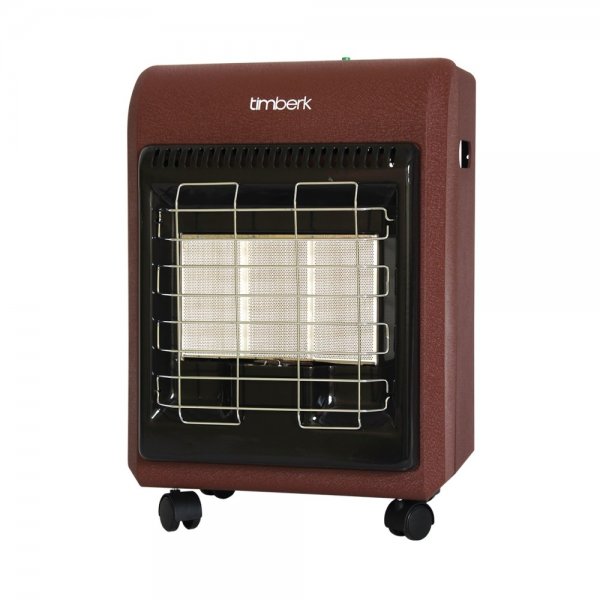
Photo 2. Gas ceramic heater from the manufacturer Timberk. Floor-standing device, the heating element is protected by a grille.
Electrical
Electric heaters are based on a heating element heated by the mains., the heat from which is transferred to ceramic plates. This design is used in convectors, emitters, hybrid equipment. Electric devices are used in apartments, country houses, less often - in summer cottages. Like gas, they are portable and stationary.
A separate category is made up of car mini heaters, powered by the cigarette lighter, used to defrost the windshield of a car.
All ceramic heating devices are also divided into floor, wall and tabletop.
Floor standing
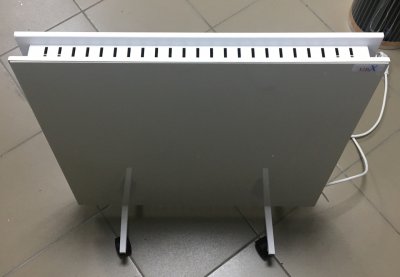
Floor-standing stoves are mobile, which allows them to be placed anywhere: next to window and door openings (to get rid of drafts), in the center of the room, near the desk.
These heaters are more powerful than wall heaters.. They are equipped with tilt sensors that turn off the device when it deviates from the vertical to a certain degree. Advanced models have a rotating base that allows you to heat the entire room, a remote control, tangential fans, etc.
Wall panels
Wall mounted convectors installed at the bottom of the wall as close to the floor as possible - hot air will rise longer, giving off more heat to the room.
Attention! It is not recommended to hang such heaters from the ceiling, as this disrupts the optimal operating mode of the convector.
Wall mounted fan heaters have larger dimensions than floor-standing ones. Externally, they resemble a split-system air conditioner. The direction of the air flow is regulated by special curtains, which are controlled remotely.
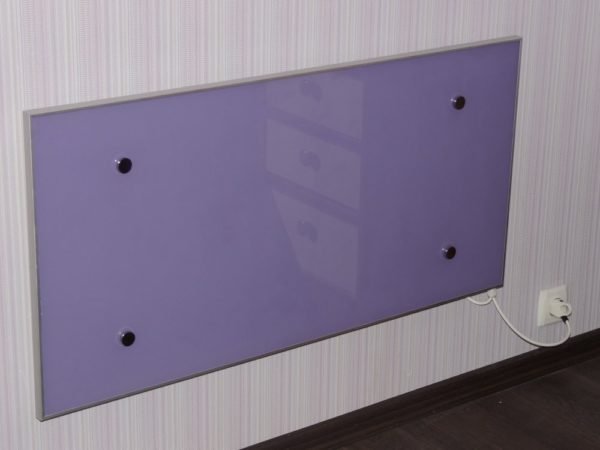
Photo 3. Ceramic heater in the form of a wall panel. The device is powered by the network, there is a socket for its connection nearby.
Wall ceramic panels, which operate on a hybrid principle, stand apart. The heating element is a flat ceramic plate covered with glaze. It protects against corrosion and cracks. During operation, the surface does not heat up above 90 °C. The panel is decorated with various patterns and textures, which allows the heating device to be organically integrated into the interior. The service life of such a device reaches 25 years.
Tabletop
Tabletop heaters are easy to install. They are compact, mobile, are suitable for placement in any convenient place.
Equipped with a tip-over sensor, propeller and rotary mechanism, which allows heating the entire room. Some models have a fan function (without heating). The main disadvantage of this design is the noisy propeller.
How to choose a device

- Decide with the location, operating mode, and design of the heater.
- Find the power from the ratio 1 kW per 10 m2 area of the premises.
- Make sure that the noise level of the operating device does not exceed a comfortable 50 dB.
- Make sure they are installed overheating, short circuit, tip-over sensors, child protection.
- Select additional options: timer, thermostat, remote control, automatic shutdown function, air ionizer, antibacterial lamp, protective screen for operation in damp rooms, support for several operating modes.
Useful video
Watch a video review of a ceramic floor heater.
Care and operation
The ceramic heater must be serviced in accordance with the operating instructions. As a rule, maintenance consists of periodically removing dust from the surface of the device and cleaning the air filter. The surface is wiped with a cloth soaked in a warm soapy solution (if the instructions allow). The filter is washed under running water. within 30 seconds, dried and installed in place. It is important to follow safety rules for electrical equipment during operation.






